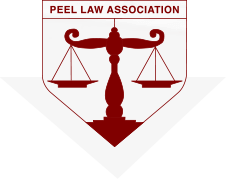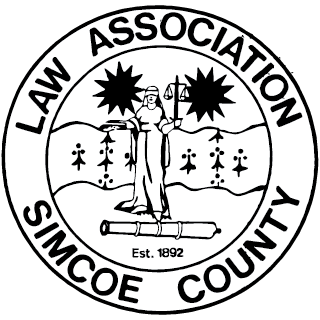|
|
|
| In Ontario, marriages are deemed to be a form of economic partnership. As such, at the end of the marriage, under Ontario law, the spouses have a right to share in the wealth generated during the marriage. This is accomplished by a process called equalization under the Family Law Act (“FLA”).
Equalization is a sharing of wealth, or the growth in value of assets, but not the assets themselves. Nothing changes ownership nor do spouses acquire an ownership interest in each other’s assets simply by virtue of the marriage. The first step in the equalization processes is to determine what each spouse owned and what liabilities each spouse had at the date of marriage and the date of separation. This calculation results in the determination of each spouse’s net worth or, as the FLA calls it, net family property. The equalization payment is half the difference between the spouses’ respective net family properties. The FLA permits spouses to exclude the value of certain assets or categories of assets from their net family property and, hence, from sharing in the equalization process. One particular set of excluded assets is gifts or inheritances (other than a matrimonial home) received from third parties during the marriage and any property, other than the matrimonial home, into which the excluded property can be traced. In this article, I will deal with gifts or inheritances received during the marriage and address how parties can ensure and preserve their excluded status. Obviously, tracing implies that there must be a further asset into which the gift or inheritance is deposited. Gifts or inheritances used to pay expenses will not be excluded as there is no existing asset into which the funds can be traced. The FLA is explicit in its special treatment of the matrimonial home: gifts or inheritances used to purchase or improve a matrimonial home are lost. So is a gifted or inherited property which becomes a matrimonial home. Plain and simple. No tracing, no excuses – only a marriage contract could have prevented this result. Similarly, if gifts or inheritances are used to purchase family assets, these assets are not excluded. Where the couple decided they needed and the husband purchased a television set, a dining room suite and other items with his inheritance, these items could not be excluded. However, parties rarely keep the gift or inheritance in a separate, sole account. That is just not the way life, or families, work. Spouses regularly mix excluded assets with other family assets or use excluded assets in order to purchase other property during the marriage. The case law has, therefore, had to deal with a variety of scenarios where the gift or inheritance is either co-mingled with other assets and/or converted to other property. The task of tracing the excluded property so that the spouse can benefit from the exclusion provisions of the FLA is a complicated one which has occupied much of the court’s time. There is, unfortunately, no clear rule for how to trace excluded property. Ontario courts have applied a variety of tracing methods, including the “first in, first out” principle and the pro rata approach (the pari passu ex post facto approach). More recently, the courts seem to have abandoned a strict, single doctrine approach to tracing in favor of using any method which would yield a just and equitable result. This common sense approach to tracing leads the court to what most would consider to be a reasonable result. What if the husband above deposits the inherited $100,000 into a brand new joint account with wife which contains no other monies? The account is worth $200,000 on the date of separation. Can husband exclude the entire $200,000? No. The law says that, having put the funds in joint names, assumes that the monies are joint. Hence, only $100,000 of the $200,000 belongs to the husband, which he can exclude for equalization purposes. But what about the wife’s $100,000? Is she entitled to deduct her $100,000 share from her NFP? No. Since the monies were a gift from husband during the marriage, and not a third party as the FLA requires, the wife’s $100,000 will be shared with the husband in the equalization calculation. Consider the case where husband inherits $100,000 and puts it into an investment account in his sole name which already contained $50,000. On separation, there is $250,000 in the account. What can the husband exclude? Using the common sense approach employed in the current case law, the husband would likely be able to exclude 2/3 of the $250,000 or $166,666.66. That is because the inherited $100,000 made up 2/3 of the investment account when it was deposited and, hence, husband should be able to exclude 2/3 of the current value of the investment account. The same principle would apply, I suggest, when monies go in and out of an account over time. For example, how much money should be excluded in the following scenario: Husband can exclude 2/3 of $125,000 or $83,333.33. Unless, for example, husband can show (trace) that the initial $50,000 was used to buy the losing stock and his $100,000 was invested in something that did not lose money. In that case, husband should be able to exclude $100,000. What if husband borrows $50,000 from his father to buy a car in January and when his father dies, the loan is forgiven? Can the husband exclude any portion of the value of the car? No. Husband already owned the car when he received the “gift” of the loan being forgiven. The car was purchased with borrowed money, not with a gift or inheritance, hence it does not qualify as excluded property. It has been held that repayment of a debt does not qualify for exclusion. Husband owns a property on the date of marriage free and clear. He later mortgages it. Husband then inherits money which he uses to pay off the mortgage. Can any of the property be excluded? No. The paying off of the mortgage was held to be the payment of a debt i.e. the inheritance was used to pay off the mortgage and did not constitute the property itself, so the exclusion was not allowed. Courts have gone the other way, however, when the facts are just slightly different. Say the husband had inherited $50,000 which he invested in a fixed term investment. Husband borrows $50,000 from Joe to buy a car and when the investment comes due, he repays Joe. Husband’s car in that case was considered excluded property. The court’s reasoning was somewhat convoluted, but perhaps it comes down to timing: in this case, husband already had the inheritance which could then easily be traced into the car. Given the lack of a bright line rule, the smartest approach to the protection of gifts and inheritances is a marriage contract. Having the spouses confirm the excluded nature of certain funds or assets in a contract is really the only way to guarantee their status upon separation. Family law specialists prepare such limited issue agreements all of the time. These specialists are also well placed to advise clients on how to approach the contract issue, which can be a sensitive one, with the other spouse. |













